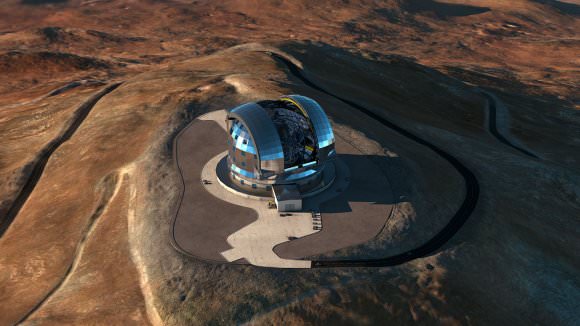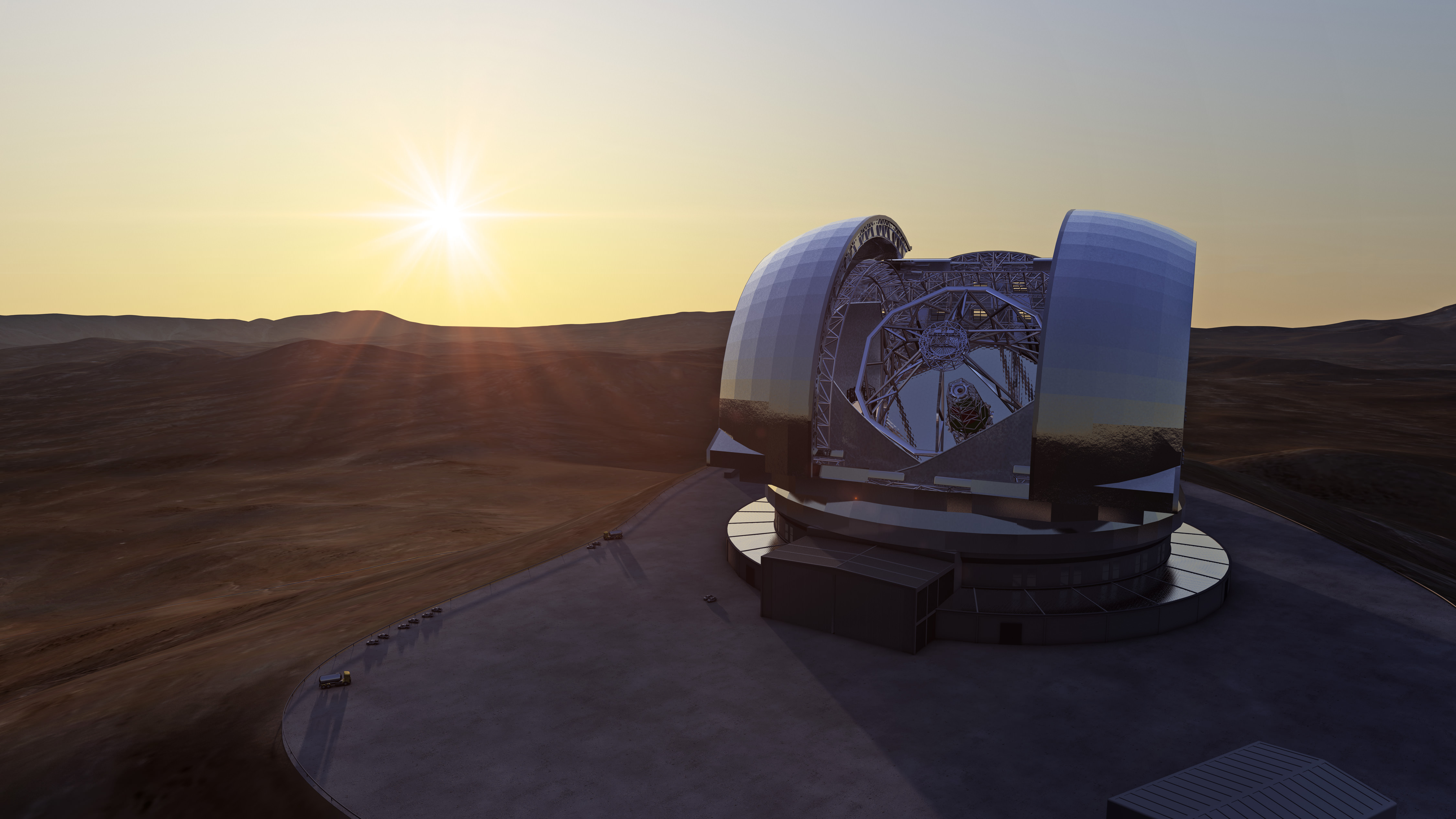In the coming years, many ground-based and space-based telescopes will commence operations and collect their first light from cosmic sources. This next-generation of telescopes is not only expected to see farther into the cosmos (and hence, farther back in time), they are also expected to reveal new things about the nature of our Universe, its creation and its evolution.
One of these instruments is the Extremely Large Telescope, an optical telescope that is overseen by the European Southern Observatory. Once it is built, the ELT will be the largest ground-based telescope in the world. Construction began in May of 2017, and the ESO recently released a video that illustrates what it will look like when it is complete.
The video (courtesy of ESOcast) shows the construction site of the ELT, which is located on Cerro Armazones – a mountain located in the highest section of the Chilean Coast Range. This site is roughly 3,000 meters (9840 ft) above sea level in the Atacama desert, where many of the world’s observatories are located because the dry desert air minimizes atmospheric disturbance.
Using computer imaging, the video shows the observatory being built from the ground up, culminating in the addition of the 39-meter (128 ft) primary mirror and its cathedral-sized dome, which then opens itself to the sky. Once construction is finished (which is scheduled for 2024), the ELT will dwarf all other ground-based telescopes, being some five times larger than the largest observing instruments currently in use.
The first stone ceremony for the telescope took place in May of 2017 and was attended by the President of Chile, Michelle Bachelet, herself. As she said during a speech to kick off the construction of the facility, “What is being raised here is more than a telescope. Here we see one of the greatest examples of the possibilities of science.”
Once operational, the ELT will dedicate itself and its advanced suit of instruments to investigating many astronomical mysteries. Among them are the detection and characterization of extra-solar planets. In addition to finding smaller worlds that orbit closer to their stars (which are more likely to be Earth-like in nature) it will also observe planetary atmospheres to determine their composition and look for biosignatures.

The ELT will also examine distant galaxies and galaxy clusters in order to investigate the nature of dark matter and dark energy. It observe super-massive black holes to determine what role they play in galactic formation and evolution. With its powerful imaging capabilities, it will also study the first stars and galaxies in the Universe in an attempt to answer some of the most burning questions about the origins and evolution of the Universe.
While construction costs are not yet available, the ESO has indicated in the past that the ELT would cost around 1 billion Euros ($1.12 billion) – based on 2012 prices. Adjusted for inflation, that works out to $1.23 billion in 2018, and roughly $1.47 billion (assuming an inflation rate of 3%) by 2024 when construction is scheduled to be completed.
But given the immense capabilities the ELT will have, not to the mention the discoveries it is expected to make, the payoff vastly outweighs the cost. Combined with other next-generation telescopes like the Giant Magellan Telescope, the Thirty Meter Telescope, the Square Kilometer Array (SKA), NASA’s James Webb Space Telescope (JWST) and the Wide-Field Infrared Survey Telescope (WFIRST), the coming decade is sure to be filled with groundbreaking discoveries!


The site looks great, but it looks like none of the feature image captions or credits are showing up.